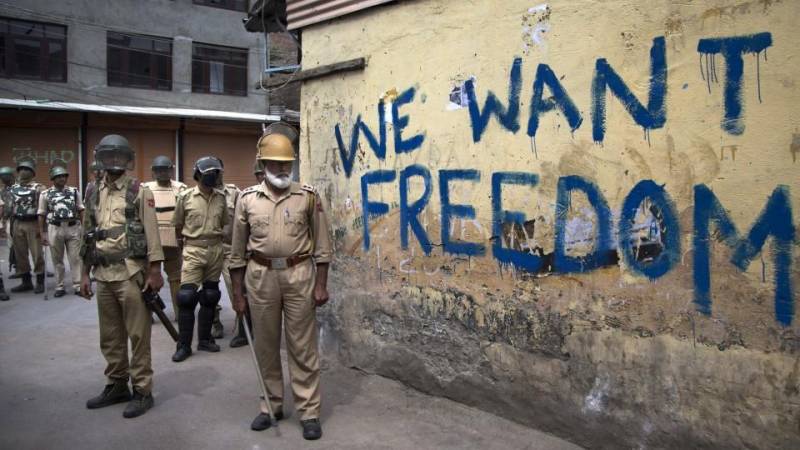In the recent wave of violence in Indian held Kashmir for the last 8 days at least 20 people have been martyred and more than 100 protesters were injured by Indian Army.
The ongoing use of the indiscriminate pellet guns has blinded 1,314 people in Indian held Kashmir since 2016 alone. The so-called non-lethal weapon has also caused deaths since it was introduced in the territory during the public uprising of 2010.
There is an evident rise in the Kashmir freedom movement after the death of charismatic rebel commander Burhan Wani in July 2016. After the martyrdom of Burhan, a new wave of violence began in the valley from July 8, 2016 to February 2017. The valley has also witnessed some of the longest curfews and shutdowns after Wani’s martyrdom.
To resolve this decades-old dispute the UN and international community have proposed different solutions, some of which include
Status Quo
Currently a boundary the Line of Control (LOC) divides the region in two, with one part occupied by India and one by Pakistan. India would like to formalize this status quo and make it the accepted international boundary.
Kashmir joins Pakistan
In view of the state's majority Muslim population and Kashmiri peoples will Kashmir joins Pakistan.
Plebiscite
The difficulty of adopting this as a potential solution is that it requires both India and Pakistan to give up territory, which they are not willing to do. Any plebiscite or referendum likely to result in a majority vote for independence.
A smaller independent Kashmir
An independent Kashmir could be created from the Kashmir Valley. currently under Indian Occupation and the narrow strip of land which calls Azad Jammu and Kashmir. This would leave the strategically important regions of the Northern Areas and Ladakh, bordering China, under the control of Pakistan and India respectively.
Independent Kashmir valley
An independent Kashmir Valley has been considered by some as the best solution because it would address the grievances of those who have been struggling against the Indian oppression since the insurgency began in 1989.
The Chenab formula
This formula first suggested in 1960’s according to this formula divide Kashmir along the line of the River Chenab. This would give the vast majority of the land to Pakistan and, as such, a clear victory in its longstanding dispute with India. The entire valley with its Muslim majority population would be brought within Pakistan's borders, as well as the majority Muslim areas of Jammu.






